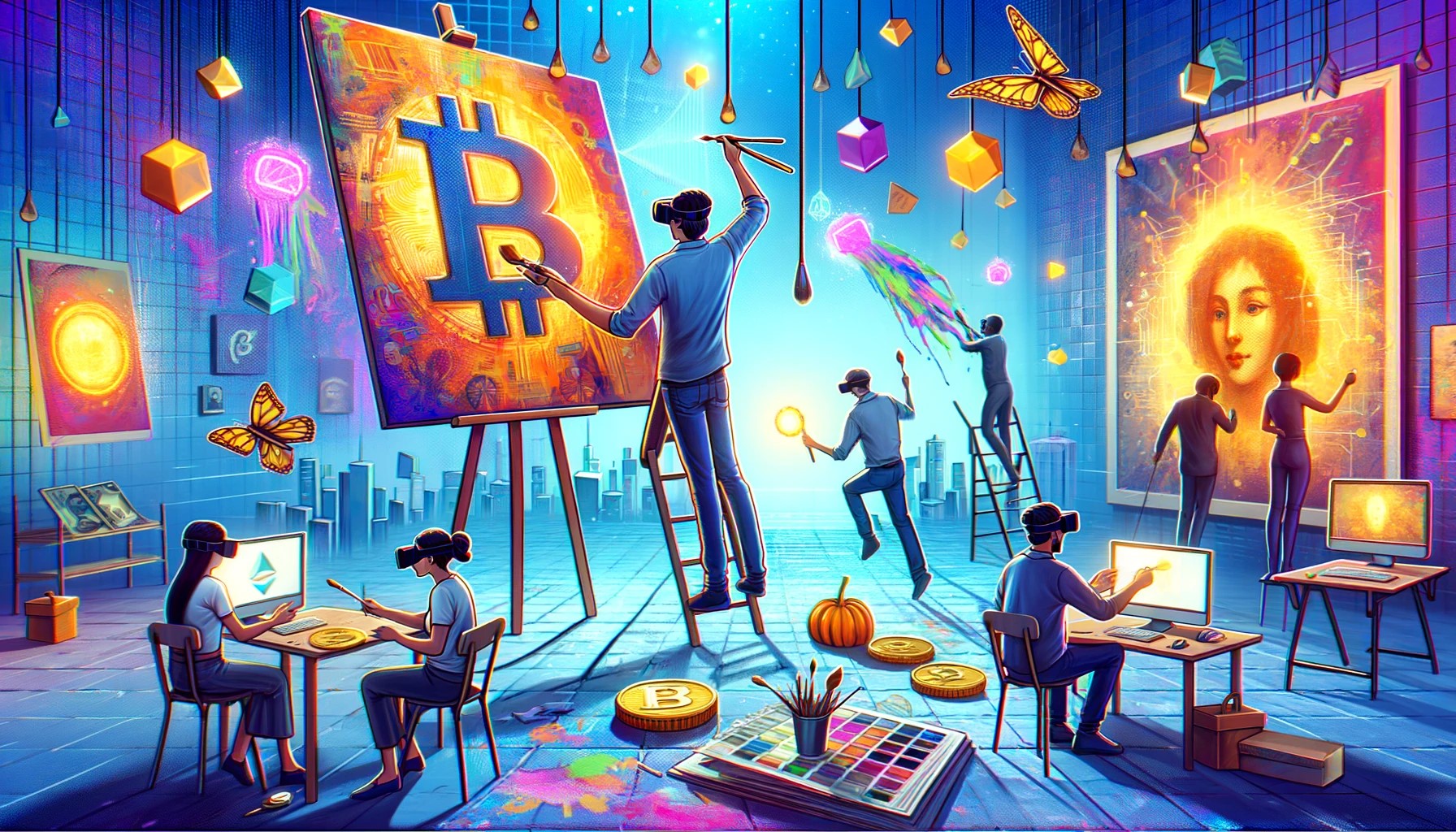The advent of virtual reality (VR) and the metaverse has ushered in a new era of artistic innovation. Concurrently, the emergence of crypto art and non-fungible tokens (NFTs) is transforming how digital art is appreciated, owned, and transacted. The fusion of these two innovative technologies is reshaping the creative industry, empowering artists, and redefining our understanding of art.
In this exploration, we delve into the intriguing nexus of VR and crypto art within the metaverse. We’ll uncover how this virtual domain provides artists with vast new platforms for their creativity, while NFTs forge paths for provenance and open up fresh revenue avenues. Embark with us on a journey into the art of tomorrow.
The Metaverse: Redefining Artistic Possibilities
Defined as a collective virtual shared space, the metaverse merges enhanced physical realities with persistent virtual spaces. It offers artists a groundbreaking arena for creative expression, pushing the limits of traditional art. In the metaverse, artists can craft immersive, interactive art pieces—virtual installations, sculptures, and environments that users can explore in unprecedented ways.
For instance, Decentraland hosts awe-inspiring virtual art galleries where artists display digital works in intricate 3D spaces. Sasha Stiles, a noted crypto artist and poet, remarks, “The metaverse isn’t merely for displaying art; it’s a canvas for creating entirely new art forms that dissolve the boundaries between virtual and real.”
Noteworthy virtual art projects in the metaverse include:
- The Virtual Art Gallery in Decentraland, a curated exhibit of crypto art and NFTs.
- Somnium Space Art Park, featuring dynamic installations and sculptures from leading digital artists.
- The Museum of Crypto Art (MoCA), dedicated to the history and preservation of crypto art.
These venues highlight the metaverse’s vast potential as a novel medium for artistic expression, offering artists unprecedented freedom and a global stage.
Crypto Art and NFTs: Pioneering Digital Ownership
Crypto art leverages blockchain technology to create, store, and trade digital artwork with a unique NFT representing each piece’s ownership and authenticity. This innovation has revolutionized the art world by solving the longstanding issue of digital art’s replicability and difficult valuation. Each NFT on the blockchain ensures a secure record of ownership and a clear transaction history.
Digital artist Beeple, whose work “Everydays: The First 5000 Days” sold for $69 million, shares, “NFTs have opened new realms for digital artists, allowing them to craft scarce digital artworks that are collectible and tradable like traditional pieces.”
The surge in NFT marketplaces like Nifty Gateway and SuperRare has catalyzed the crypto art movement, providing platforms for artists to mint and trade their digital creations, often achieving substantial returns.
Empowering Artists: Decentralization and New Economic Avenues
The metaverse and crypto art are disrupting traditional models by enabling artists to bypass intermediaries, directly connect with audiences, and retain more profits. NFTs allow for programmed ongoing royalties, ensuring artists benefit from secondary market sales—a significant departure from traditional practices where artists gain only from initial sales.
Legal expert Jess Conatser explains, “NFTs could forge a fairer and more sustainable ecosystem for artists, allowing them continual involvement in the valuation of their work.”
The decentralized nature of the metaverse and crypto art also broadens access to a global collector base without the constraints of geography or logistics, sparking new opportunities for artists worldwide.
Innovative Showcasing: Virtual Art Galleries and Exhibitions
The metaverse has created new virtual art galleries and exhibitions that give artists different ways to showcase their work and interact with viewers. These digital venues go beyond standard gallery boundaries through offering worldwide access, adjustable viewing options, and interactive elements.
Well-known platforms such as Somnium Space Art Gallery offer artists the opportunity to showcase their digital creations in stunning virtual environments. Decentraland’s ability to host large displays of digital art and enable live performances and direct interactions between artists and audiences is showcased during events such as “Metaverse Art Week.”
Conclusion
Virtual reality and crypto art are coming together to form a fresh approach for artistic expression and engagement. As technology advances, the digital world’s potential for increased immersive and interactive art experiences is growing, offering artists and art enthusiasts fresh chances for engagement. The upcoming journey in the metaverse is expected to be equally groundbreaking and thrilling, transforming the concept of art in the digital age.
FAQs
The metaverse is a digital space where users can engage with digital objects and communicate with each other in an immersive manner. For artists, the metaverse offers a fresh opportunity to produce, display, and market their digital creations, giving them unmatched creative liberty and worldwide exposure.
NFTs, also known as non-fungible tokens, are distinct digital assets that signify ownership of a particular piece of digital content, like an artwork. NFTs leverage blockchain technology to confirm authenticity and origin, allowing artists to create digital scarcity and assign worth to their works. NFTs enable artists to encode continuous royalties in their creations, guaranteeing they receive a share of future transactions in the resale market.
Indeed, traditional artists can definitely participate in crypto art and the metaverse. Numerous experienced artists are starting to discover the possibilities of NFTs and virtual shows, whether by converting their current works to digital format or making brand new pieces online. The metaverse provides a fresh platform for artists to express themselves, open to creators from diverse backgrounds.
A few prominent virtual art experiences in the metaverse are the Somnium Space Art Gallery, enabling artists to display their work in personalized 3D environments, and the “Metaverse Art Week” organized in Decentraland, featuring over 100 artists presenting their digital creations. Additional instances consist of virtual museums like the Museum of Crypto Art (MoCA), as well as immersive installations crafted by individual artists.
As VR technology progresses, we can anticipate more elaborate and engaging virtual art experiences ahead. This might involve incorporating haptic feedback for users to physically interact with digital art, along with using AI and generative algorithms to develop dynamic installations. Creating universal protocols and connections among diverse blockchain networks may enhance cooperation and interoperability within the metaverse art community. Moreover, with the increasing number of artists and collectors adopting crypto art, there could be a wider approval and assimilation with the conventional art realm.




